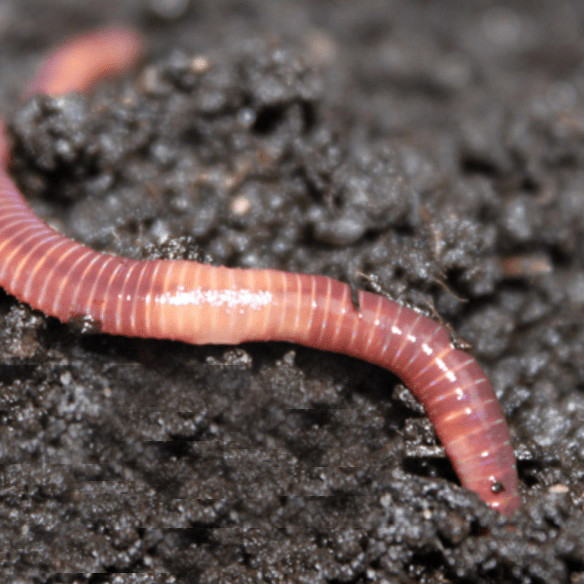The Ultimate Overview to Red Wigglers for Healthy Dirt
The duty of red wigglers, scientifically known as Eisenia fetida, in dirt health and wellness is a subject of boosting passion amongst sustainable horticulture lovers and farming specialists alike. These microorganisms not only reuse natural waste yet also enhance soil fertility through their nutrient-rich castings.
What Are Red Wigglers?
Red wigglers, scientifically referred to as Eisenia fetida, play a crucial function in composting and dirt wellness. These earthworms are particularly well-suited for vermicomposting, a procedure that utilizes their all-natural habits to decompose organic issue efficiently. Unlike various other earthworm types, red wigglers prosper in abundant organic settings, making them optimal for compost containers and worm farms.
Measuring regarding 3 to 4 inches in size, red wigglers possess a distinct reddish-brown pigmentation and a segmented body that aids in their mobility through decomposing materials. They are detritivores, implying they eat rotting natural compounds, including kitchen scraps, plant debris, and paper products. red worms. Via their intake of these products, they assist break down complex compounds, transforming them right into nutrient-rich castings that enhance soil top quality
Red wigglers are additionally respected breeders, with the ability of recreating rapidly under optimal conditions. Their flexibility to different atmospheres enables them to grow in a series of composting systems. By recognizing the biology and ecological importance of red wigglers, garden enthusiasts and farmers can harness their capabilities to enhance dirt wellness and advertise lasting methods in farming.

Benefits of Red Wigglers
The various benefits of integrating red wigglers into composting practices substantially boost dirt wellness and fertility. These earthworms, medically referred to as Eisenia fetida, succeed at breaking down organic matter, transforming kitchen scraps and lawn waste into nutrient-rich vermicompost. This process not only speeds up decomposition however likewise improves the dirt with important nutrients such as nitrogen, phosphorus, and potassium.
Moreover, red wigglers improve dirt framework by developing aggregates that help with oygenation and water retention. Their burrowing activities advertise a well-aerated atmosphere, allowing origins to access oxygen more efficiently. This boosted aeration also cultivates useful microbial task, which is essential for nutrition biking and general soil vigor.
Along with enhancing soil composition and framework, red wigglers add to pest monitoring. Their presence in the dirt aids reduce damaging nematodes and various other pests, decreasing the demand for chemical interventions. The application of vermicompost leads to raised plant durability against illness, promoting much healthier growth.
Setting Up a Worm Container
Establishing up a worm container can be a rewarding endeavor for those looking to boost their composting initiatives. The first action is selecting a proper container, preferably made from plastic or timber, with a capacity of a minimum of 10 gallons to accommodate the worms and their food. Make certain the bin has sufficient air flow-- pierce small holes in the lid and sides to advertise air flow while stopping excess wetness buildup.

Present the red wigglers right into the bin, permitting them to adapt to their new setting. Preferably, begin with a population of about one pound of worms per square foot of surface location. Put the worm bin in a location that preserves a steady temperature level, ideally in between 55 ° F and 77 ° F. With these fundamental actions, your worm container will be prepared to thrive in the search of healthy dirt.
(purchase red worms)
Feeding Your Red Wigglers
When it pertains to supporting red wigglers, understanding their nutritional needs is necessary for preserving a healthy worm bin. These worms grow on a diverse diet, mostly composed of natural matter. Suitable food sources include fruit and veggie scraps, coffee grounds, smashed eggshells, and shredded paper or cardboard. It is crucial to prevent feeding them citrus fruits, onions, and garlic, as these can be detrimental to their health and wellness.
Portion control is crucial; overfeeding can lead to odor concerns and draw in parasites. A great general rule is to use food that is roughly equivalent to the weight of the worms in the bin every week. Screen the intake price and adjust feeding quantities appropriately.
To advertise a well balanced diet, objective to supply a mix of nitrogen-rich environment-friendlies, such as vegetable peels, and carbon-rich browns, such as dried leaves or cardboard. Furthermore, preserving correct dampness levels is very important-- food scraps need to perspire however not soggy - red worms. By very carefully managing their diet and atmosphere, you will make sure that your red wigglers stay healthy and balanced and effective, adding properly to the composting procedure
Making Use Of Worm Spreadings in Dirt
Including worm spreadings right into dirt can dramatically boost its wellness and fertility. Worm spreadings, additionally recognized as vermicompost, are an abundant resource of nutrients, consisting of nitrogen, phosphorus, and potassium, necessary for plant development. When included in dirt, these spreadings boost its framework by boosting oygenation and improving moisture retention, which is especially useful in deserts.
Additionally, worm spreadings present helpful microbes that promote a healthy soil ecosystem (red worms). These microorganisms help in damaging down organic matter, making nutrients quicker offered to plants. The visibility Read More Here of these germs also assists suppress soil-borne diseases, reducing the requirement for chemical fertilizers and pesticides
To utilize worm castings efficiently, mix them right into the top few inches of dirt prior to planting or use them as a top clothing around established plants. An advised application price is regarding 10-20% castings combined with dirt to enhance nutrition availability without frustrating the plants.
Conclusion
Finally, red wigglers, or Eisenia fetida, play a pivotal duty in enhancing dirt wellness through their vermicomposting tasks. By transforming organic waste right into nutrient-rich castings, these worms boost soil framework, aeration, and moisture retention. Reliable management of their environment and dietary needs maximizes their advantages in gardening methods. Ultimately, the combination of red wigglers right into soil management methods advertises lasting agriculture by minimizing reliance on chemical fertilizers and cultivating useful microbial task.